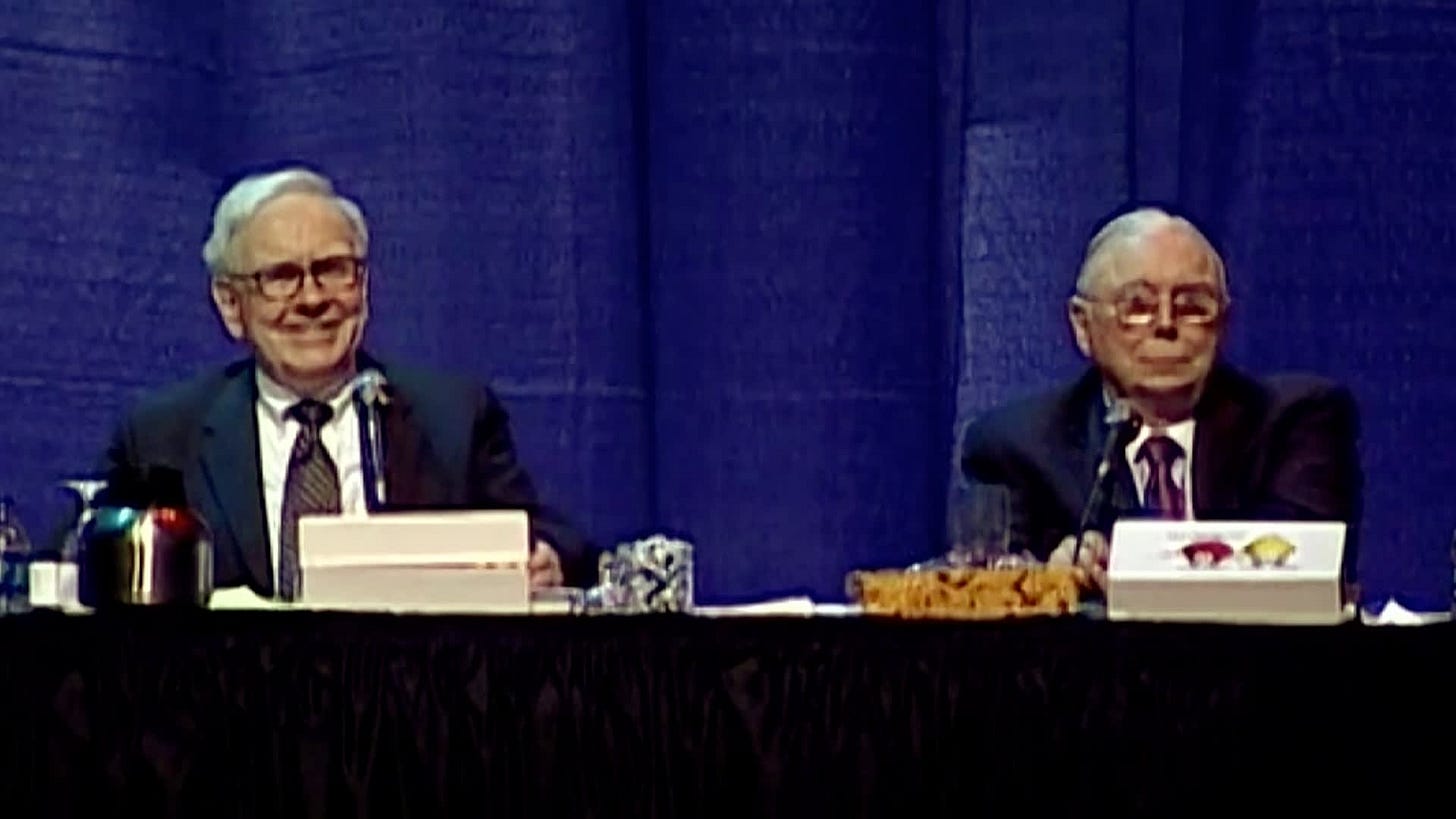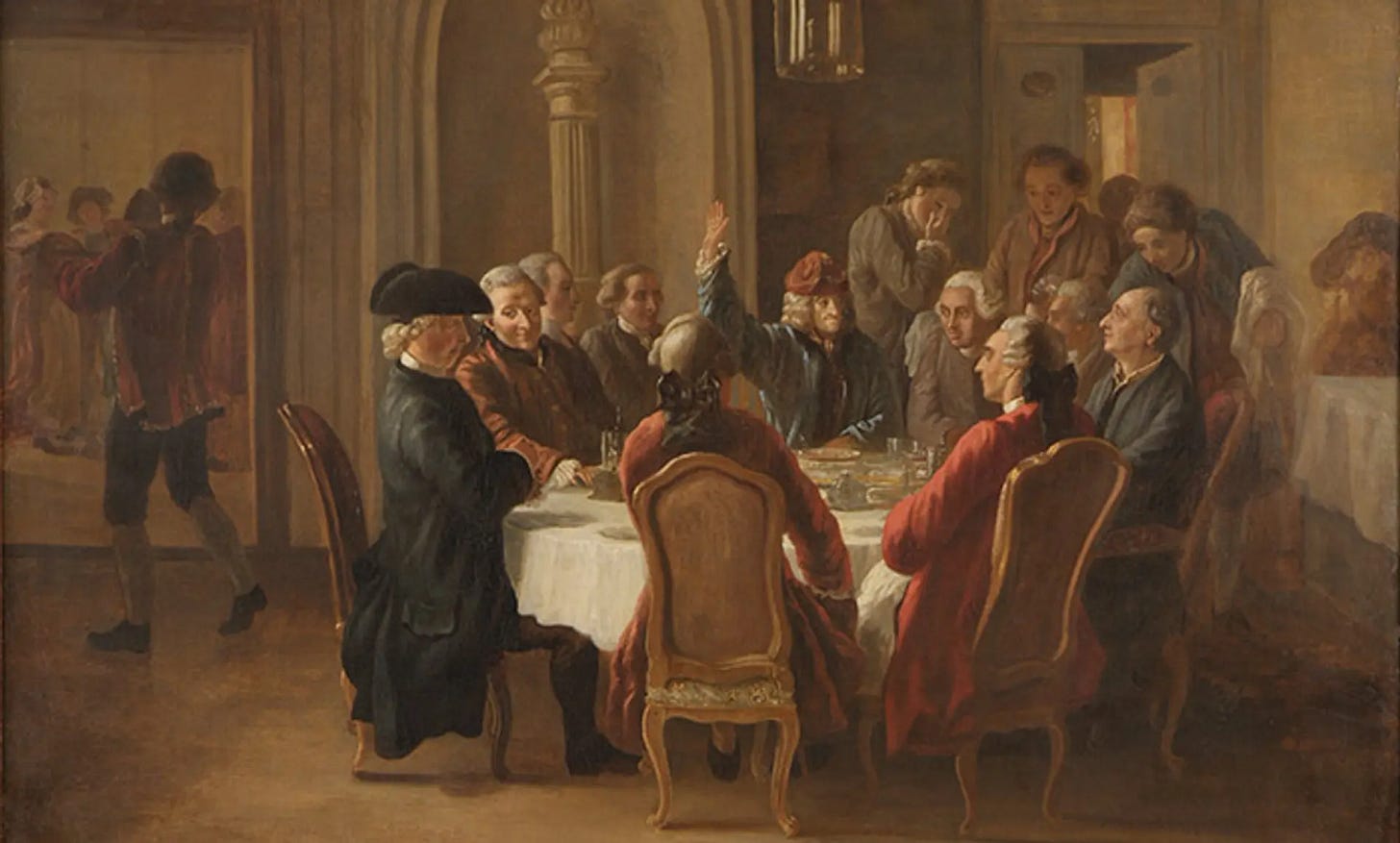The First Principles of Uncertainty
8 principles for human choice and action in the shadow of the unknown
“Doubt is not a pleasant condition, but certainty is absurd.” Voltaire
Uncertainty is a broad word - broad to such a degree that it loses meaning. Interchangeably with uncertainty, there is indecision, doubt, anxiety, risk, and ambiguity. It’s ironic that such a nebulous concept is used to describe nebulousness. Academics may further classify uncertainty as epistemic, aleatoric, Knightian, or radical. This uncertainty about uncertainty is compounded as terms can be applied across disciplines as diverse as cosmology, medicine, finance, and psychology.
Our language is filled with conditional and probabilistic constructs - if, maybe, perhaps, possibly - showing that we have an implicit understanding of life's uncertainties. It's fitting that the 20th-century physics of quantum mechanics eventually revealed our implicit understanding to be true. Uncertainty is at the universe's core, counter to the deterministic worldview popular since Newton’s time. It was not just our human lives, but reality itself that was probabilistic and uncertain.
This examination focuses on uncertainty at the human scale - it’s nature and effects on choices, actions, and decision-making. We will uncover principles we can rely on and build from, enabling us to make decisions with greater clarity in our careers, finances, and relationships. And hopefully we can even alleviate the sources of today’s collective unease and unprecedented levels of anxiety.
Evolutionary Beginnings
Why does this state exist at all?
Felt uncertainty is an adaptive response; it ramps up physiological arousal, priming the body to handle what is to come. Lab studies show that when people face a 50% chance of receiving an electric shock, their stress and arousal response exceeds those even when the shock is guaranteed - evidence that the nervous system flags ‘maybe’ as more urgent than ‘yes’ or ‘no’.
When outcomes are potentially pleasant instead, unpredictability plays a different role. Dopamine-rich circuits fire most vigorously to rewards that are surprising. Coupled with an arousal boost, attention becomes more vigorous, boosting engagement and curiosity. These signals enhance the learning and adaptation process, strengthening both working and long-term memory.
The uneasy feeling the unknown gives us is no design flaw - it keeps us alert, motivates exploration, and equips us to learn from both danger and opportunity.
Seeking closure: the desire to end uncertainty
Every waking moment confronts us with choices - what to eat, what to wear, when to cross the street. Left unchecked, the search for information, the weighing of alternatives, and the generation of ‘what-if’ scenarios could continue indefinitely; there is no distinct point of termination. It is only when we reach what psychologists call cognitive closure - the point at which the brain accepts one explanation and suppresses the rest - that we can finally close the thread and act.
Maintaining an open set of possibilities is metabolically expensive. Homeostatic principles push the nervous system toward stable, low-effort states. There are new theories of mind that cast the brain as a prediction-error minimizer: it constantly tweaks its internal model to shrink the gap between what it expects and what it perceives. If uncertainty stays unresolved, the longer the gap lingers, and the more neural resources are consumed.
Our early hominids ancestors evolved in environments where self-defense and hunting were more frequent aspects of life, where hesitation had dire consequences. Timely, confident action would have beaten flawless but belated analysis. Ending uncertainty is naturally our default response: it conserves energy, restores a sense of control, and allows life to move forward.
The costs of closure
Once we reach cognitive closure the search for truth is cut short. Belief hardens; the mind tends to simplify into black and white, drifting toward rigid or extreme views. When settled views are questioned, we overconfidently protect them. People and ideologies that echo our convictions become especially appealing. New evidence is discounted, exceptions are dismissed, and nuance goes unnoticed.
Because health, finances, work, and relationships all demand sound judgment and a clear view of reality, this self-imposed ignorance carries a price. The world is not only changing rapidly but changing at a faster rate; today, in many matters, rewards come from flexible adaptation rather than inflexible conviction.

First Principles of Human Uncertainty
Principle I: Separate reducible and irreducible uncertainties
The fundamental distinction of uncertainty is between reducible uncertainty and irreducible uncertainty.
Reducible uncertainty can be lowered by gathering more information, improving your model of the world, or taking exploratory action. Reducible uncertainty is also known as epistemic uncertainty (the Greek root episteme means knowledge). Under reducible uncertainty, you retain agency and a power to affect it.
Irreducible uncertainty cannot be reduced through knowledge or action. The situation simply contains too many unknowable factors, has a complex interplay of many variables, and is also subject to new unseen variables. Sometimes this irreducible uncertainty can be given a probability distribution, like in the case of a dice roll or coin toss. More often, even the probability distribution is impossible to truly model - there is potential “unknown unknowns” or “black swan events”. No amount of data or analysis removes this particular element of chance.
Most real world decisions are a mixture of these types - for example, a career choice or what to invest in has elements of both. Simply sorting what is reducible and accepting what is not will start to clarify action and alleviate anxiety.
Principle II: Irreducible uncertainty is highest in complex systems
A complex system (the human body, public financial markets, the climate, etc.) can be defined as having one or more of the following qualities:
Interdependence between factors: makes it hard to separate individual threads to find independent causes or explanations
Feedback loops: reinforcing types that can compound into a runaway train of effects, or balancing types which have a self-regulating mechanism. There is also reflexivity, a type of feedback loop involving conscious agents, occurring when our beliefs and understanding of a situation affect the situation itself and vice-versa (ie placebo effect, market cycles).
Emergence: when a combined entity has properties and behavior that is not predictable from examining individual elements. The simplest example of this is water: without knowing, it would be hard to predict that combining the highly flammable gas hydrogen with the tasteless and colorless gas oxygen would create a wet and blue liquid.
Simple mechanical systems often follow predictable patterns we can fully comprehend. However, as complexity increases, individual pieces of knowledge contribute less to genuine insight about the system as a whole. Certain isolated aspects may reveal patterns or cycles, but irreducible uncertainty remains high. Accepting this reality rather than fighting against it allows us to focus our attention on what aspects, if any, can be reduced through investigation.
This perspective does not diminish the value of truth-seeking in complex domains. These fields are often the most consequential and profound, and meaningful discoveries can often take decades of work or radically new perspectives. But today, there is a deluge of high-conviction voices speaking about complex systems like financial markets or our health. Exercise skepticism when you hear them. Complete certainty under complexity is simply confirmation bias - a selective attention to evidence that confirms existing beliefs and ignores contradictory information.

Principle III: Action and certainty operate in a reinforcing loop
A paradox exists within human uncertainty: we require some degree of certainty to act effectively, yet action itself is the most powerful tool for reducing uncertainty. When we take action, we generate the most telling feedback and relevant information. This creates a reinforcing cycle where action leads to increased knowledge and understanding, which leads to refined action.
This action need not be substantial; in fact, in environments with high uncertainty, smaller experimental steps are often most effective. Successful startups demonstrate this principle by moving quickly, obsessively iterating, and implementing feedback. They operate under high reducible uncertainty, so small and measured actions (even on the most radical ideas) bring them towards product-market fit.
The level of certainty we exist in - and that we can potentially achieve - directly informs both the scale and intervention size of our actions.
Principle IV: Resolving one uncertainty frees energy for tackling others.
Artists, writers, and innovators have consistently reported that working within constrains or defined boundaries paradoxically enhance their creativity and productivity. Limitations in space, frameworks, and deadlines catalyze rather than inhibit their work. These constraints represent a form of certainty that frees cognitive resources for deeper exploration within the remaining space.
We’re often navigating multiple uncertainties in life. It helps to strategically close certain questions, even temporarily or tentatively, to gain traction on others. Making a decision about Domain A liberates mental and emotional energy for Domain B - Z.

Principle V: Leaders have a responsibility to absorb uncertainty
In hierarchical relationships, the higher level party protects the lower level party from uncertainty, who in turn surrenders some freedom or agency. This dynamic appears in parent-child, employer-employee, teacher-student, and even God-devotee relationships.
Workers exchange their agency for stability - employers take responsibility for limiting financial, social, and health uncertainties.
Part of the role of leadership is shouldering the burden of ambiguity. This allows their teams, students, children to be most effective. Leaders should understand "clear is kind, unclear is unkind.” Brené Brown

Principle VI: More information can increase uncertainty
We naturally believe more information will lead to greater knowledge and wiser action. However, knowledge isn't merely about information volume but about information weight - a single crucial insight can outweigh hundreds of peripheral facts. Simply adding info is often an opportunity cost to a better understanding of what is already there and its relationships.
Adding info can also confuse our internal models, moving our priorities out of whack. Instead of adding, intentionally discarding old or rotten info that we have been subconsciously maintaining can be orders of magnitude more effective.
Action has uncertainty-reducing qualities that gathering information alone does not. When we act, we get feedback from reality directly. It can reveal previously invisible options and open up entirely new decision trees. Action expands the possibility space rather than reframing the current one.

Principle VII: Uncertainty can be reshaped through perspective and belief
Uncertainty is disconcerting mainly when it is associated with negative outcomes. Our coping mechanisms can manifest as compulsive behavior, procrastination, or chronic stress and anxiety. Our relationship with uncertainty defines much of our life.
Luckily, the very indeterminacy of the uncertain state, the very vagueness, allows us to shape it like clay. Optimism and pessimism are two attitudes toward uncertain future states. One allows you to frame the unknown as opportunity and potential, a future that can be anticipated with excitement. This optimistic viewpoint also takes advantage of brain’s natural thirst for novelty and its associated reward circuits.
Hunter-gatherer society, the only mode of living for the vast majority of humanity, has a remarkable absence of any anxiety disorders. Even in studies of isolated groups in environments as demanding as the Kalahari Desert or the Arctic Circle, there is an unshakeable belief in the environment’s ability to provide. The pervading sense is that nature is abundant, as long as a reciprocal respect is shown. Nature itself is not seen as separate, but as part and parcel of the self - there is a fluid boundary when it comes to the individual. Contrast this with a modern society that is becoming increasingly individualized and atomized. Despite unprecedented material abundance, market economics cultivates a persistent sense of scarcity and comparison. However, these are cultural constructs, and we retain the capacity to believe in abundance over an artificial scarcity. We can also reach to expand beyond the confines of an isolated and separated self.
There is also guidance in spirituality. Religious traditions grounded in Genesis offer concepts of divine providence, destiny, and faith. These help carry the burden of uncertainty, freeing a devotee to potentially transcend altogether. Alternatively, Buddhism accepts mystery openly through direct experience. There is an emphasis on practice to observe and feel with equanimity rather than resistance. Contrast this to the modern grind for resolution, explanation, and abstraction - the very abstractions that create anxiety.
Principle VIII: Uncertainty increases significance and depth of meaning

Life pulses with change and impermanence. To resist this truth is to invite suffering. The wisdom traditions spanning continents and millennia converge on this insight - from the contemplation of 4th century BC Buddhism to the fortitude of 3rd century Stoicism to the freedom of 20th century existentialism.
The existentialist philosophers responded to the uncertainties of their war-torn time by giving full agency to humans to craft the individual meaning in their lives. We get to determine the narrative we construct around the unknown parts of our existence. As Sartre wrote, "There is no sense in life a priori. Life is nothing until it is lived; but it is yours to make sense of, and the value of it is nothing else but the sense that you choose."
Consider a life where every moment unfolds with perfect predictability, where you can see the entire path stretched before you like a road on a map. Would such certainty satisfy the human spirit?
Uncertainty is not a condition to be endured but an environment to be explored. There is marvel in the breadth of the outer world and an unimaginable depth to the inner. The questions that cannot be definitively answered are precisely the questions that have inspired our greatest art, philosophy, and spiritual traditions. A life without uncertainty would be a story already concluded, a canvas already painted before the artist's first stroke. It is in the space of not knowing that we construct our lives.





